In the drier landscapes of South and West Maui, the battle against invasive plant species is an ongoing challenge. Weeds not only compete with native flora for resources but also pose a threat to the delicate ecological balance of the region. Here, we delve into the ten most prevalent weeds in South and West Maui, exploring their characteristics, impact on the environment, and efforts to manage their spread.
1. Kahili Ginger (Hedychium gardnerianum): 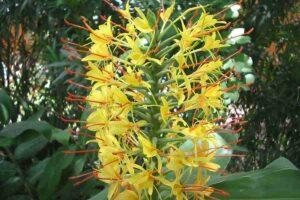
Kahili Ginger, originally from the Himalayas, is a highly invasive plant in Maui. Recognizable by its large, fragrant flowers, this weed forms dense thickets, outcompeting native vegetation. The spread of Kahili Ginger is particularly problematic in the rainforest areas of Hana, where it displaces native species and disrupts natural ecosystems.
2. Strawberry Guava (Psidium cattleianum): 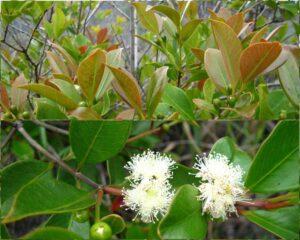
Strawberry Guava, introduced to Hawaii in the early 19th century, has become a major invasive species. Its ability to form impenetrable thickets prevents native plants from thriving. Besides ecological concerns, Strawberry Guava also negatively impacts water resources, as it tends to colonize watersh eds, affecting the quantity and quality of water flowing through the region.
3. Pampas Grass (Cortaderia selloana): 
Pampas Grass, with its tall plumes, is a common sight along roadsides and in disturbed areas of South and West Maui. Despite its ornamental appeal, this invasive grass outcompetes native vegetation and is a fire hazard. Its feathery seeds are easily dispersed by wind, aiding its rapid spread.
4. Australian Tree Fern (Sphaeropteris cooperi) :
Native to Australia, the Australian Tree Fern has invaded many forested areas in Maui. This fast-growing fern shades out native plants and alters the structure of the understory. Its presence can lead to a decline in biodiversity, as many native species are unable to thrive in its shadow.
5. Yellow Himalayan Raspberry (Rubus ellipticus): 
The Yellow Himalayan Raspberry, characterized by its yellow-orange berries, is an aggressive invader in Maui. It forms dense thickets, particularly in disturbed areas and along forest edges, impacting the regeneration of native plants. The spread of this raspberry is aided by birds that consume its fruits and disperse the seeds.
6. African Tulip Tree (Spathodea campanulata): 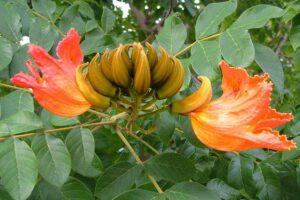
With its vibrant orange flowers, the African Tulip Tree is a common ornamental plant that has naturalized in South and West Maui. However, its rapid growth and prolific seed production contribute to its invasive nature. The African Tulip Tree outcompetes native species for sunlight and nutrients, leading to a reduction in native plant diversity.
7. Koster’s Curse (Clidemia hirta): 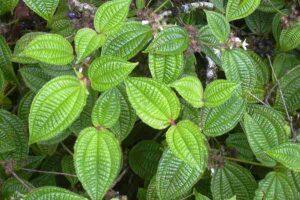
Koster’s Curse, a shrubby plant native to South America, has invaded many areas in Maui, forming dense thickets in forests and open spaces. This invasive weed displaces native vegetation and alters soil conditions, making it challenging for native plants to reestablish. The spread of Koster’s Curse is facilitated by its abundant seed production and the ability of seeds to germinate in a variety of soil types.
8. Fountain Grass (Pennisetum setaceum): 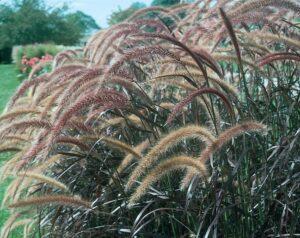
Fountain Grass, introduced for landscaping purposes, is now a widespread invasive species in South and West Maui. Its feathery plumes and attractive appearance belie its detrimental impact on native ecosystems. This grass is highly flammable, posing a significant fire risk, and its rapid spread along roadsides and open areas further threatens native plant communities.
9. Miconia (Miconia calvescens): ![]()
Miconia, often referred to as the “purple plague,” is a highly invasive tree that can quickly dominate forested areas. Originally from South America, Miconia forms dense stands that shade out native vegetation, leading to a decline in native plant diversity. Efforts to control Miconia include manual removal and the introduction of biological control agents.
10. African Olive (Olea europaea subsp. cuspidata): 
African Olive, introduced for erosion control, has become an invasive species in Maui. Its dense canopy shades out native plants, and it is capable of forming monocultures in some areas. Efforts to control African Olive involve cutting and treating the stumps to prevent regrowth, but the persistence of this invasive tree remains a concern.
In conclusion, the prevalence of these invasive weeds in South and West Maui underscores the importance of ongoing conservation and management efforts. Local organizations and authorities are actively engaged in invasive species control programs, employing a combination of manual removal, herbicide application, and the introduction of biocontrol agents. However, the persistence and adaptability of these invasive species highlight the need for sustained vigilance and community involvement to protect the unique and fragile ecosystems of South and West Maui.
12.04.2023-TF-SB



